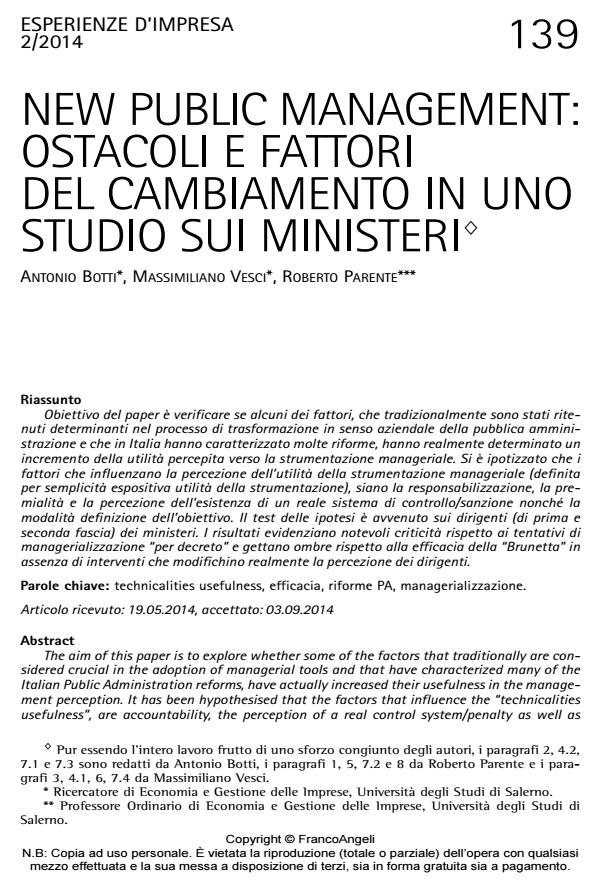New public management: ostacoli e fattori del cambiamento in uno studio sui ministeri
Journal title ESPERIENZE D'IMPRESA
Author/s Antonio Botti, Massimiliano Vesci, Roberto Parente
Publishing Year 2015 Issue 2014/2
Language Italian Pages 28 P. 139-166 File size 186 KB
DOI 10.3280/EI2014-002008
DOI is like a bar code for intellectual property: to have more infomation
click here
Below, you can see the article first page
If you want to buy this article in PDF format, you can do it, following the instructions to buy download credits

FrancoAngeli is member of Publishers International Linking Association, Inc (PILA), a not-for-profit association which run the CrossRef service enabling links to and from online scholarly content.
The aim of this paper is to explore whether some of the factors that traditionally are considered crucial in the adoption of managerial tools and that have characterized many of the Italian Public Administration reforms, have actually increased their usefulness in the management perception. It has been hypothesised that the factors that influence the "technicalities usefulness", are accountability, the perception of a real control system/penalty as well as clearly defined objectives. The hypothesis testing is done on Italian Ministries management. Results show considerable criticisms on managerialization "by decree" and cast a shadow over the effectiveness of the "Brunetta Reform" in the absence of interventions that really alter management perception.
Keywords: Technicalities usefulness, effectiveness, public administration reform, managerialization
Antonio Botti, Massimiliano Vesci, Roberto Parente, New public management: ostacoli e fattori del cambiamento in uno studio sui ministeri in "ESPERIENZE D'IMPRESA" 2/2014, pp 139-166, DOI: 10.3280/EI2014-002008